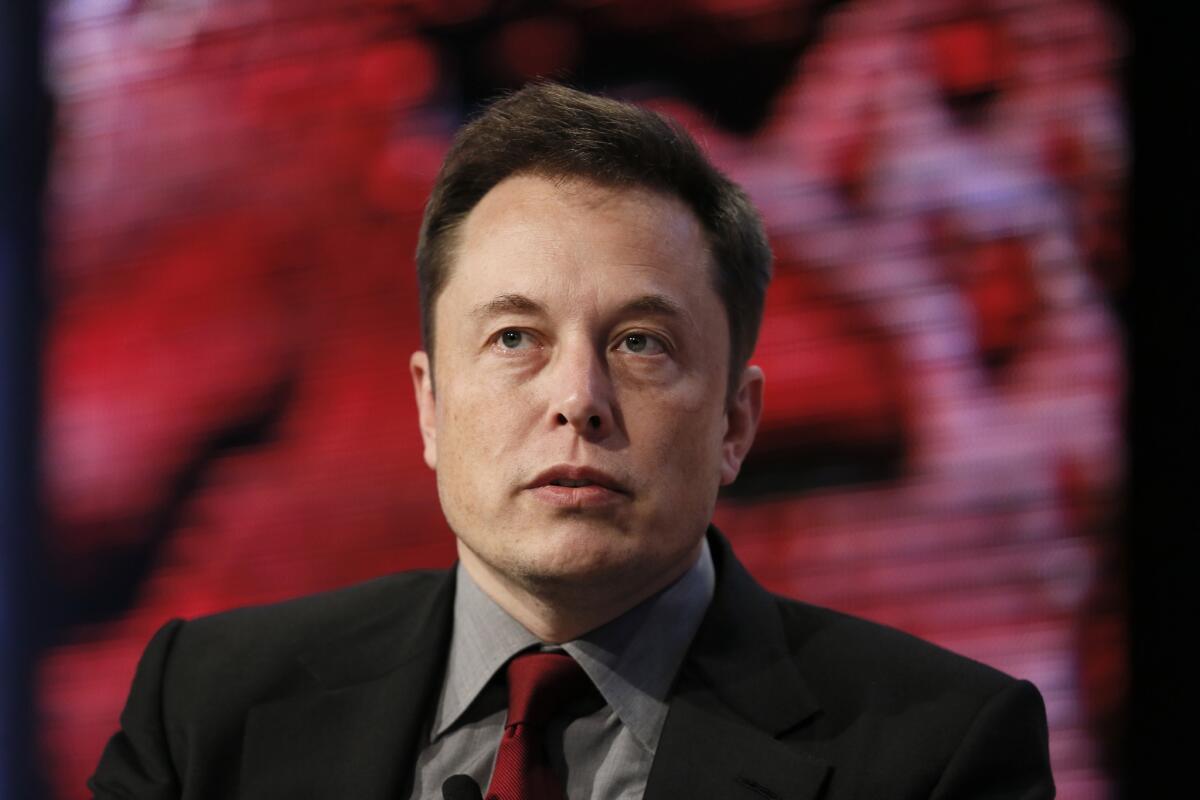Elon Musk: Model S not a car but a ‘sophisticated computer on wheels’

In a move that demonstrates how the mechanical and electronic worlds are converging, Tesla Motors plans to update many of its Model S sedans with functions that include automatic braking when the vehicle senses a pending collision, a partial autopilot system, and even a robotic parking program that will tuck a car into its garage while its owner watches from the porch.
With the exception of robotic parking, Mercedes-Benz, Audi, Acura and other luxury brands already offer cars with these options. But those features were built into the cars before they were purchased. What’s different with Tesla is its ability to remotely add substantial functions to cars that it has already sold.
The autopilot safety features are available to the Model S with the hardware that started being built into cars last October.
Since the invention of the automobile more than a century ago, consumers were pretty much stuck with the car they purchased. They could make some changes in tires, tuning and suspension that could improve the performance of the vehicle. But doing anything big such as adding features or getting more power out of the engine involved the complex and often expensive swapping of parts -- or trading up to a more expensive model.
Tesla Chief Executive Elon Musk may be overturning those conventions.
“We really designed the Model S to be a very sophisticated computer on wheels,” Musk said Thursday, while announcing software updates for his Model S. “Tesla is a software company as much as it is a hardware company. A huge part of what Tesla is, is a Silicon Valley software company. We view this the same as updating your phone or your laptop.”
Analysts agreed, saying Tesla is taking a design approach that looks at a vehicle as an electronic device rather than a machine. Cars will become platforms for apps that can change or improve their functions rather than having their performance frozen in place at the time of purchase.
“You are seeing a convergence of the car and the mobile phone,” said Efraim Levy, auto industry analyst at S&P Capital IQ.
Musk announced the anticipated changes during a teleconference at which he also unveiled software updates that allow the car to scan the locations of all Tesla charging stations and tell drivers exactly how far it is to the best one, and then recommend the best route for getting there. Musk said this app will relieve “range anxiety,” or fear that a car will run out of electricity before it reaches a destination where it can be recharged. Older cars will also get these features.
The Model S electric sports sedans will receive the free software updates through a wireless link embedded in the cars.
“This is one of the ways that Tesla shows off its innovation and it is in the direction that consumers increasingly expect,” Levy said. “Technology changes and they get upgrades.”
Musk said the major updates will start in about three months. He plans continued software changes every three to four months.
“Most cars don’t improve over time, but the Models S gets faster and better as time passes,” he said.
Tesla also is using a software update to improve radio reception and the sound system in its cars.
With the safety functions, the car company is taking advantage of a suite of sensors already installed on the vehicles to create software that will trigger the brakes if the computers believe the car is about to have a collision. It will also offer a system that alerts drivers to whether there is a vehicle in a blind spot when they want to change lanes.
Musk said Tesla is testing an autopilot function that allows a driver to travel almost all the way from San Francisco to Seattle without the driver touching the wheel.
“It is technically capable of going from parking lot to parking lot, but we won’t be enabling that for users with this software sweep,” Musk said, adding that the auto steering system is not yet safe for the dense traffic of urban areas.
The rapid advances in robotic driving prompted a consumer group Thursday to issue a safety warning and ask the California Department of Motor Vehicles to resist pressure from automotive and technology companies to quickly write rules for self-driving cars.
“Safety issues are paramount, of course, but there are other substantial questions about privacy, data security and insurance that are also raised by driverless cars. The DMV regulations now being written governing the public use of autonomous vehicles should reflect these important questions as well,” Consumer Watchdog wrote in a letter to the state agency.
Consumer Watchdog said it was primarily targeting Google’s driverless car technology, which includes car-like transport pods that don’t include steering wheels or controls that would allow a human to take control of the vehicles. But the group also mentioned a host of safety concerns.
It said that heavy rain and snow could interfere with the sensors that govern the autopilot function. It questioned whether the sensors would be able to correctly read hand signals given by the human driver of another vehicle, or a policeman using only hand signals to direct traffic.
“It is possible, perhaps even likely, that the technology needed to manufacture vehicles that operate ‘autonomously’ with 100% safety will eventually be perfected,” the group said. “In the meantime, under any realistic scenario for the near or even distant future, human drivers will be responsible for maintaining control of their vehicle in order to prevent an accident.”







